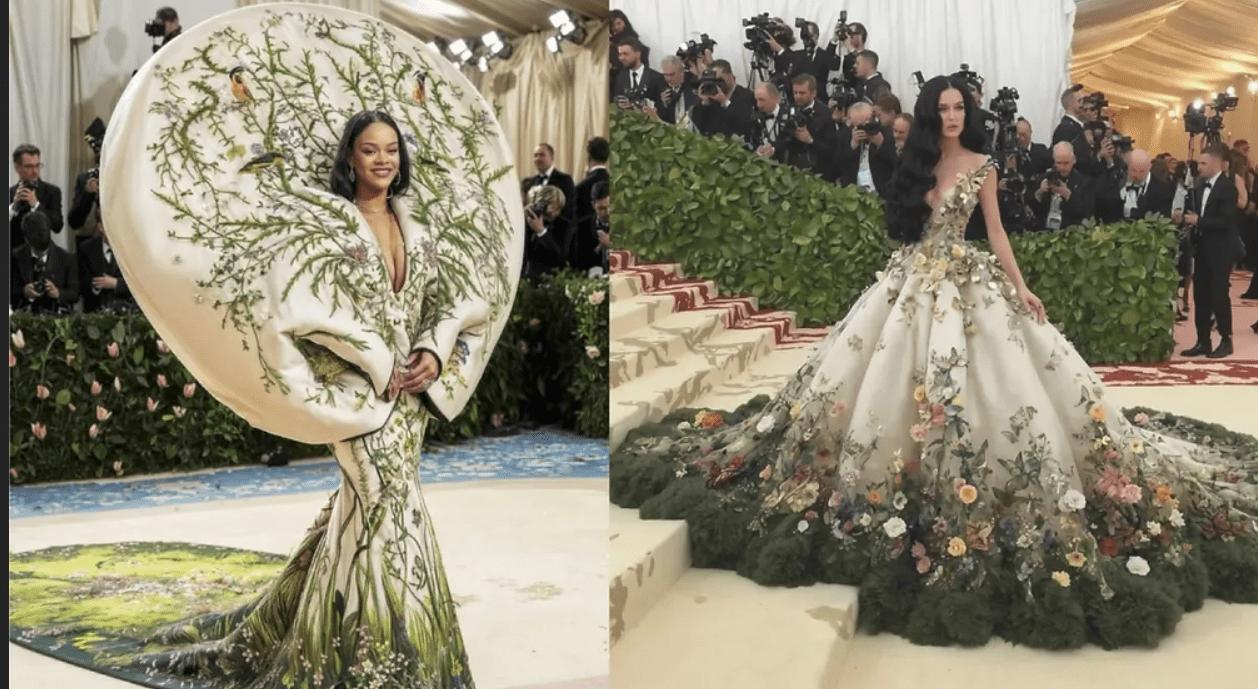Recently, the Met Gala, famous for its extravagant fashion showcases, has transformed into a playground for generative AI, blurring the boundary between reality and digital manipulation.
During this year’s Met Gala festivities, Katy Perry received a text from her mother, praising her stunning floral gown seen circulating online. However, Perry had to clarify that the person in the photo wasn’t actually her but an AI-generated version superimposed onto a previous Met Gala carpet background. While this doesn’t prove that AI can completely fool someone’s own mother with its lifelike images, it does make us wonder how believable it can be, especially when it comes to clothing.
The Met Gala is known as the Super Bowl of Fashion, where people wear extravagant and bold outfits. What was once seen as shocking, like Bjork’s swan dress at the Oscars, now doesn’t seem like a big deal. Because of this, the Gala is a perfect place for AI-generated fake images to fit right in. With everyone trying to stand out with their wild fashion choices, even the craziest AI creations can look normal.

One might wonder what outrageous outfit Doja Cat could hypothetically rock at the Met Gala, given the event’s penchant for the extraordinary. Moreover, the Gala’s atmosphere of quick costume changes and multiple looks throughout the night adds to the confusion, making it easier for AI manipulators to deceive viewers.
The rise of AI-generated Met Gala imagery can be categorized into three types: playful fakes, fashion showcases, and malicious manipulations. Playful fakes are obviously fake creations meant for entertainment, while fashion showcases demonstrate designers’ imaginative concepts with AI assistance. The most insidious are the unlabeled manipulations designed to cause mass confusion, spreading widely and prompting celebrities to refute false images of themselves.
The introduction of generative AI into the Met Gala underscores a poignant truth about celebrity culture that it was already steeped in trickery and artifice, and now in this day and age it has become even more of an illusion.

Celebrities have always navigated their way in this world in their preset of carefully planned personalities, personas and staged moments. This is where authenticity has always been questioned and has taken several steps back to image and publicity, giving the fans and the world only what they want to see.
The Met Gala as well, which was once a show of modern fashion and celebrity spectacle has become the prime target for this digital deception and AI generated deepfakes which have blurred the boundaries of reality and illusion. This event now thrives on outlandish displays and personalities which have become larger than life itself. The attendees strive to outdo themselves every year with increasingly audacious outfits and transformations so much so that the line between genuine expression and made up and staged glamor has become blurred.
OpenAI’s announcement of a “deepfake detector” for disinformation researchers marks a step towards empowering the public against AI deception. Equipping individuals with tools to discern real from fake in the digital realm becomes increasingly crucial as AI manipulation continues to evolve.


